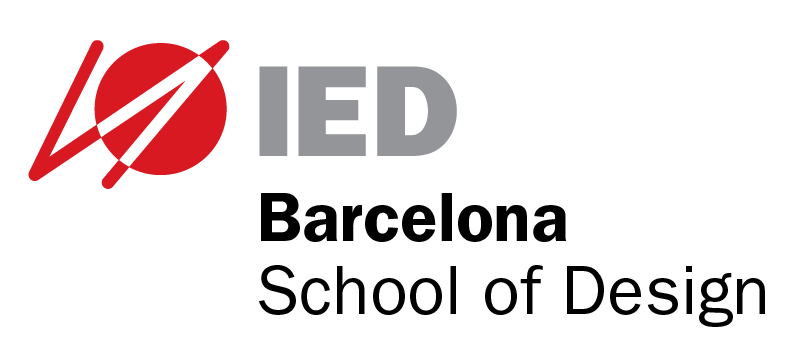Biomimetics for designers : applying nature's processes and materials in the real world / Veronika Kapsali
Material type: TextLanguage: English Publisher: London : Thames & Hudson, 2016Description: 240 pàgines : il·lustracions ; 26 cmContent type:
TextLanguage: English Publisher: London : Thames & Hudson, 2016Description: 240 pàgines : il·lustracions ; 26 cmContent type: - text
- sense mediació
- volum
- 9780500518489
| Item type | Current library | Call number | Status | Date due | Barcode |
|---|---|---|---|---|---|
| Llibre | IED Barcelona Sala General / Producte i Industrial | P2.055 Kap (Browse shelf(Opens below)) | Available | 2019-1012 |
Inclou referències bibliogràfiques (p. 234) i índex
A brief history of biomimetics -- Biomimetics in myth and reality -- Biomimetic design -- The future -- 01. Shape. Biology. Hedge thorns; Timber beetle mandibles; Bird flight; Kingfisher beak; Dolphin body shape; Humpback whale pectoral fin; Boxfish -- Biomimetic application. Barbed wire; Modern saw chain; Modern aviation; Shinkansen bullet train; Streamlined vessels; Applied tubercle systems; Bionic car -- 02. Surface. Biology. Shark skin; Burdock; Gecko feet; Lotus leaf; Morpho butterfly; Starfish pedicellariae; Leaf stomata; Thorny devil; Namib beetle -- Biomimetic application. Superfunctional texture; Velcro; Super-adhesive texture; Lotus effect; Mophotex; Micro-gripping texture; Stomatex; Passive water harvesting and distribution; Fog and dew harvesting -- 03. Structure. Biology. Giant reed stem; Honeycomb; Natural cellular systems; Natural cellular structures; Auxetic materials; Wood; Nacre; Dinosaur eel; Scaly-foot snail; Seahorse skeleton; Glass sponge; Polar bear fur; Plant roots -- Biomimetic application. Technical stem; Airless tyres; Minimal-material products; Blast-resistant textiles; Biomimetic wood; Synthetic nacre; MetaMesh; Advanced protective equipment; Resilient structures; Bioglass-inspired structures; Solar textiles; Transpirational textiles -- 04. Making. Biology. Paper wasp; Cocoon silk; Spiker silk; Bacterial silk; Bacterial cellulose; Mycelium; Tissue cultures; Photosynthesis; Bacteria; Slime mould -- Biomimetic application. Paper industry; Man-made fibre industry; Synthetic spider silk; Bolt threads; Biocouture; Mushroom materials; Meat and materials; Biobatteries; Hybrid electronics; Brainless computing -- 05. Towards 4D design. Biology. Squid nerves; Artificial intelligence. The brain; Swarm intelligence. Fire ants; Biorobotics. Plant roots; Man-machine hybrids; Bird aviation; Octopus -- Biomimetic application. Schmitt trigger; Intelligent machines; Swarm robotics; PLANTOID; Robotic exoskeletons; Morphing aeroplane wings; Soft robotics -- Self-replication and self-assembly. Self-replication; Movement; Protein molecules; Flower buds -- Biomimetic application. RedRap; Sculpting with motion. Self-assembling furniture; Autonomous self-assembling robots -- Soft machines. Wheat awn; Penguin coat; Pine cones; Spruce cones; Octopus skin -- Biomimetic application. Amorphous robots; Insulating textiles; Adaptive textiles; Programmable wood; Dynamic soft surfaces
"The natural world contains infinite examples of how to achieve complex behaviors and applications by using simple materials in a clever way. As we begin to exhaust the natural resources we rely on to create our products and environments, designers are increasingly turning to nature, where organisms make use of limited raw materials to survive, for inspiration about how to invent fascinating solutions to everyday design problems. The importance of biomimicry, manufacturing materials that imitate life's natural processes, has been known for years, and designers have often looked to nature for formal solutions. In the popular imagination, the best-known example is the microscopic 'hook' on burrs that inspired the development of Velcro, but there are many more applications, from kingfisher beaks inspiring the shape of bullet trains to shark skin being used as a model for advanced swimsuits. Author Veronika Kapsali, trained biologist and designer, presents insightful examples, showing each natural phenomenon alongside its man-made application, with an accessible explanation of the biology and the story of the design. While most are concrete examples that have already been developed, others point the way to what might be possible for an enterprising designer" -- Web de l'editor

There are no comments on this title.